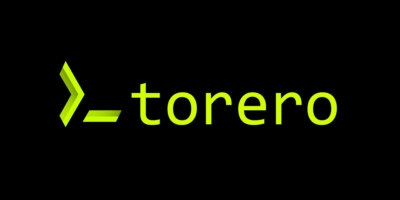AutoCon 1 in Amsterdam last week brought the network automation community together — network engineers, developers, architects, vendors — to learn from one another, discuss why we haven’t seen full adoption of network automation yet, and continue to progress.
Now, building on the momentum from AutoCon 1, how do we keep moving forward?
The first AutoCon raised a rallying cry aimed at vendors — meeting practitioners where they are, building tools that are easy to adopt and integrate with other tools, and solidifying the foundations for an open, fast-moving network automation ecosystem. At AutoCon 1, we saw some of the initial results of that call to action: OpsMill launched the open source InfraHub, NetBox Labs unveiled the NetBox Cloud Free Plan to make adoption easier, and Itential announced torero, a free-forever tool to deliver Python, Playbooks, and Plans as services to be shared and distributed.
It was incredibly exciting to hear sessions about network automation with the enthusiasm we’d hoped for after AutoCon 0. Teams are beginning to automate across a wider variety of domains with a larger set of tools, making the challenges of integration and collaboration even more important to solve. At the core of most sessions was a simple message: adopt practical tools, expand the reach of automation, identify areas for further innovation, and keep evolving.
Let’s dive into a few sessions I found particularly impactful.
AutoCon 1 Sessions Showed Network Automation Is Moving Forward
Dinesh Dutt
Stardust Systems CEO Dinesh Dutt delivered some gut checks that are vital to getting past common network automation hurdles. He explained that there’s a significant gap between the abstraction and automation network vendors offer and what network teams actually need. It’s important to communicate what we need as a community — practical, open tooling that integrates with other tools easily — so vendors can provide those tools.
Another challenge? Data models. As much as it might be the ideal, the variety of different network vendors out there are never going to come together on a uniform data model. That means letting go of vendor uniformity and understanding that working across different tools and platforms will involve complex data management.
In addition, it’s time to understand that automation is not just generating config. Network automation should be evaluated and mapped to the steps in the NetDevOps cycle (Plan, Build, Test, Deploy, Observe, Feedback) as we continue to move forward.
Steinn Örvar
Steinn Örvar, Lead Product Development Engineer at Advania Ísland, took us on the wild ride that was upgrading from a legacy automation system to a system built around NetBox.
Their team found success by keeping the system simple whenever possible, building out automation using tools that can act as “Lego bricks” to connect with the rest of the environment.
The key thing I took from Steinn’s presentation was, when we got to see diagrams of business-critical systems, the amount of integration and interdependency really shows just how important it is to be able to automate across multiple tools, multiple vendors, and multiple domains in order to support what people are doing today. Integration is absolutely critical to scaling network automation and delivering complex services to developers and other network consumers.
Mark Coleman
A big announcement came from NetBox Labs Co-Founder and Chief Evangelist Mark Coleman: NetBox is unveiling the NetBox Cloud Free Plan to lower the barriers to get started.
His session was a perfect summary of what the AutoCon community has been pushing for since last year — vendors and the community coalescing around an open, interoperable set of tools. It’s critical for vendors to step up and provide what network engineers need to be able to accelerate automation and automate across the multi-vendor complexity that is our networking reality.
Like we heard from Dinesh, Steinn, and pretty much everyone, tools that are practical to adopt and integrate with your environment with as few barriers as possible are vital to the future of network automation. This move from NetBox shows the impact of AutoCon, the network automation community, and the way we’re evolving as an industry. Check out Mark’s blog on his AutoCon 1 observation here.
There were many more exciting sessions and interesting vendors at the event than I could list here. For those who want a little more, check out this awesome vlog by Roger Perkin where he interviews attendees – including Dinesh Dutt and myself! You can catch up on all the sessions here.
Takeaways
To cap off these session summaries, I think the main thing to take away is that network automation will improve when network vendors listen to customers and provide what they need. Interoperability is crucial — providing publicly available APIs with clear documentation and removing barriers to adopting tools will benefit everyone, vendors included.
Friction is the enemy of automation in complex, multi-domain, multi-vendor networks — an open, integrated ecosystem lets engineers go faster and achieve more.
torero: Scaling Network Automation From Individuals to Teams
It’s no coincidence that multiple free and/or open source tools were announced at AutoCon. We were incredibly excited to launch torero, the free-forever tool developed by Itential that’s designed to automate the process of sharing network automations as services.
When I introduced torero in my own AutoCon session, I wanted to emphasize a clear message: it’s time to transition from localized development to team oriented development and focus on the way we operationalize network automation.
Imagine a network engineer wants to share a Python script with a team member. Going from running code on your personal machine to a server means more challenges and more friction from troubleshooting to dependency management to ensure nothing breaks. Then, as time goes on, you end up facing the headache of keeping development and production infrastructures in sync with dependencies and library versions. It’s time-consuming, difficult, and introduces more room for error along the way. One individual I spoke with at the event beautifully expressed it, telling me that his hard drive was “a graveyard of dead Python virtual environments.” This is exactly the challenge we’re aiming to solve with torero.
torero is an automation gateway, meaning it provides a uniform execution environment for network automation tooling. It focuses on providing features and capabilities to ease the challenge of operationalizing automation. By making it simple to transition from localized automation execution to launching automation against production infrastructure, torero takes that burden away from network teams, allowing them to stay focused on building automations without the distraction of managing execution infrastructure.
I loved the reaction to torero at the event — I had a half dozen conversations right after our session that confirmed this is something people have been looking for. I also want to highlight this LinkedIn post by Ethan Banks of Packet Pushers — not only is it a great explanation of torero, but it’s also a great encapsulation of why we’re so excited and what it could mean for the network automation community.
AutoCon, Community, & the Future of Network Automation
Now, after the second-ever AutoCon, I’m more excited about network automation’s evolution than ever. We’ve seen the impact of the automation community and the Network Automation Forum already, bringing together network professionals and vendors to identify where the industry needs to evolve. The launch of torero, the NetBox Cloud Free Plan, an evolving approach to multi-vendor tooling and automating across hybrid environments — AutoCon 1 showed that we’ve already taken some significant steps since the first event last year, and I can’t wait to see the continued evolution at AutoCon 2 in Denver this fall.
You can download torero for free here and get started right now — docs and demos should give you everything you need to start seamlessly executing Python, Playbooks, and Plans against production infrastructure. You can also hear my conversation about the driving forces behind the creation of torero with Eric Chou and Drew Conry-Murray on this new episode of Packet Pushers’ Network Automation Nerds.





